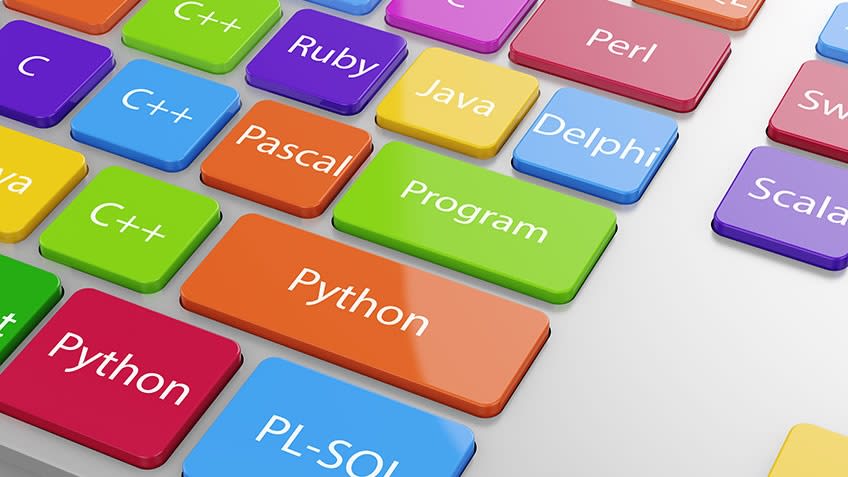Many enterprises and governments alike have already acknowledged the importance of computer programming in their efforts to develop local versions of otherwise popular international digital platforms such as Zoom, Facebook, Amazon, and Alibaba.
However, the numerous options for computer programming languages makes deciding which of these languages you should learn a nontrivial exercise.
Maneuvering through the Deluge of Computer Programming Languages – Part I
Computer emergency response boosting cyber security — FG
There are the mainstream and firmly established languages, as well those in demand or pay the most.
Some languages are just fun to know, and some are popular, while others have a large set of libraries, with frameworks, tooling support, and a large community.
Today’s article, which is a continuation of last week’s, has the objective of helping you decide the languages to consider learning.
Note that programmers don’t usually settle for one language, but rather a couple.
After all, knowing one language usually speeds up the process of picking up another one.
Whichever languages you settle on, you will need to program them often, in order to realize the anticipated skill.
The chronology of computer language development was briefly discussed in the article of last week, including the following languages: Algorithm for the Analytical Engine, Assembly Language, Autocode, FORTRAN, COBOL, LISP, BASIC, Pascal, Smalltalk, C, and SQL.
We also have MATLAB (MATrix LABoratory), which was developed in 1978 by Cleve Moler for solving mathematical equations and producing basic graphics.
It is popular in the engineering industry and in tertiary education.
Objective-C was developed by Brad Cox and Tom Love in 1983, as the main language used in writing the software for Apple’s operating systems (macOS and iOS) for the company’s desktop, iPad, and iPhone products.
The C++ language is an extension of C and was developed by Bjarne Stroustrup in 1983.
It is one of the most widely used languages globally.
Many packaged software is still written in C++.
Perl was developed in 1987 by Larry Wall as a scripting language designed for text editing and simplifying report processing.
However, it has found applications in other areas, including web development and network programming.
Guido Van Rossum developed Python in 1991, as an easy-to-read language that requires fewer lines of code compared to other languages.
The frameworks used in Instagram are written in Python.
Java was developed by Sun Microsystems in 1995, and was intended for cable boxes and hand-held devices, but is now widely used to deliver information on the Web.
Java, which represents a breakaway from the Unix clones of the time, is now found on computers and smartphones, and other uses.
More than three billion devices reportedly run Java. JavaScript was developed by Brendan Eich in 1995 for the purpose of enhancing Web browser interactions, and every major website reportedly uses it.
In 2000, Microsoft combined C++ and the simplicity of Visual Basic to develop C#, which has significant similarities with Java, and is used in virtually in all Microsoft products and by those who build applications for PC desktops.
Google developed Go in 2009 to handle large software systems which task languages such as C++, Java, and Python.
Finally, Apple developed Swift in 2014 as a proprietary replacement for C, C++, and Objective-C.
Swift is supposed to be easy to use and versatile.
It is suitable for cloud services, desktop and mobile apps.
According to Nathalie Morris on 20 February 2020 in Codingame.com, based on annual survey of Human Resources professionals and developers, the top 10 in-demand programming languages are: JavaScript (71% of respondents are on the hunt for candidates with this skill), Java (57%), C# (53%), Python (51%), C++ (40%), PHP (40%), C (16%), Kotlin (16%), Objective-C (16%), and Ruby (15%).
She offers this advice: “If your goals involve artificial intelligence (AI) then finding developers with Python knowledge is a good start.
“However, if you’re building games, then C# will be more suitable. Alternatively, if you’re unsure of your future needs as an enterprise, then pick a language that is popular across many industries and applications.
“JavaScript, for example, is the standard programming language of the Web and a decent all-rounder for developers. Meanwhile, Python is well-known in Machine Learning and Data Science circles.”
She also suggests that “starting with one of the four programming languages she discussed (JavaScript, Java, C#, and Python) will give you a strong foundation.
“However, ensure you always keep up with the changing times, for the next big thing in programming and your industry.
“That way, when a new language or use case appears, your organization and developers will already be a step ahead.”

 Join Daily Trust WhatsApp Community For Quick Access To News and Happenings Around You.
Join Daily Trust WhatsApp Community For Quick Access To News and Happenings Around You.


